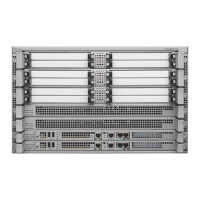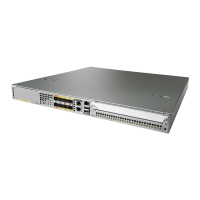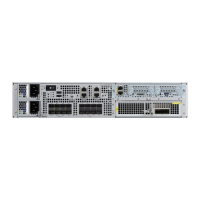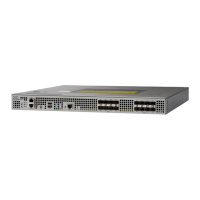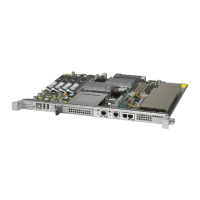19-15
Cisco ASR 1000 Series Aggregation Services Routers SIP and SPA Software Configuration Guide
OL-14127-08
Chapter 19 Configuring the 1-Port Channelized OC-3/STM-1 SPA and 1-Port Channelized OC-12/STM-4 SPA
Configuration Tasks
0 packets output, 0 bytes, 0 underruns
0 output errors, 0 collisions, 2 interface resets
0 output buffer failures, 0 output buffers swapped out
1 carrier transitions no alarm present
VC 0: timeslot(s): 1, Transmitter delay 0, non-inverted data
Optional Configurations
There are several standard, but optional, configurations that might be necessary to complete the
configuration of your serial SPA.
• Configuring Encapsulation, page 19-15
• Configuring the CRC Size for T1, page 19-16
• Configuring FDL, page 19-17
• Configuring FRF.12, page 19-18
• Configuring Multilink Point-to-Point Protocol (Hardware-Based on the QFP), page 19-18
• Configuring LFI, page 19-21
• Inverting Data on the T1/E1 Interface, page 19-21
• Inverting Data on the T1/E1 Interface, page 19-21
• Changing a Channel Group Configuration, page 19-22
• Configuring BERT, page 19-22
• Configuring QoS Features on Serial SPAs, page 19-24
Configuring Encapsulation
When traffic crosses a WAN link, the connection needs a Layer 2 protocol to encapsulate traffic. To set
the encapsulation method, use the following commands:
Command Purpose
Step 1
Router# configure terminal Enters global configuration mode.
Step 2
Router(config)# interface serial
slot/subslot/port:channel-group
Selects the interface to configure and enters
interface configuration mode.
• slot/subslot/port:channel-group—Specifies
the location of the interface.
For addressing information, refer to the
“Specifying the Physical Address for
Controller and Interface Configuration”
section on page 19-2. and “Naming the
Interface” section on page 19-3.

